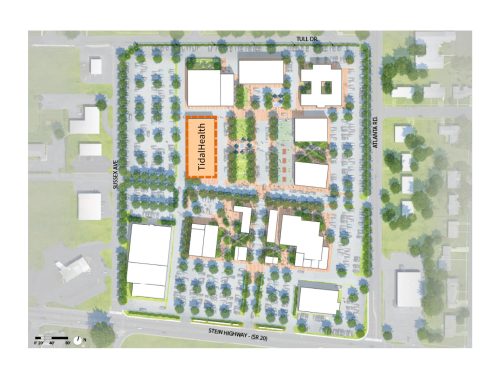I got to thinking the other day about what SEDAC can continue to do in Sussex County to help with business development. We have supported efforts to: begin to solve our doctor shortage in Sussex, improve broadband in Sussex, improve the permitting process in Delaware and, in general, to make economic development more successful. But were we addressing the 800-pound gorilla in the room?
What I speak of is housing. We have a really serious shortage of all types of housing in Sussex County. This is also a nationwide shortage. I hate to bore you with numbers but they point out the problem very quickly.
Nationally, and it is clearly reflected in Sussex County, the annual growth rate of housing stock from 1968 through 2000 grew by 1.7 percent, but that same growth rate for the last two decades grew by only 1 percent and, moreover, the last decade by only .7 percent. For those who say we have too much building happening in Sussex, the numbers clearly point out that we are not building enough.
Since 2010, the number of young adults from ages 25 to 34 living at home with parents increased by 2.5 million and more than doubled from 2010 to 2020. In the last 20 years, the gap between existing and new homes totaled more than 5.5 million housing units. This is one of those occasions where Sussex County is right there with the best of them; unfortunately, in this case, it’s a big time negative. We are not building enough homes for our people.
You notice that I haven’t mentioned affordable or work force housing. This type of housing is difficult to find at best in Western and Central Sussex and impossible to find in Eastern Sussex. Try to live where you work if you live from Route 113 East. The cost of what one must pay to rent or buy a home in Eastern Sussex makes it almost impossible for a young or middle- income individual or couple to buy or rent a home.
Therein lies the problem. How can we recruit new business to Sussex if they have nowhere to live? Sussex County has one of the highest out-migration of 18 to 25-year-olds in the nation. Without a place to call your own, why stay here? We are not building enough homes for our people.
But what happens when a developer seeks to build affordable housing? First problem is the zoning ordinance doesn’t allow the density needed to build these homes and still make a profit. Second problem is the anti-growth people. You know them as those folks who have come to Sussex since 2010 and somehow believe they didn’t cause the traffic problems we have. More on the roads later.
When a developer steps up to provide housing for not just new folks, come see the fireworks at the zoning hearing. All the anti-growth people show up and try to scream the application down or protest it to death. In my 47 years involved in the zoning process in Sussex, I have yet to hear the anti-growth folks show up to support any application that would provide shelter for the young people of Sussex who want to come home to live and work. We are not building enough homes for our people.
Let’s talk about traffic and road improvements. I continue to hear that traffic is going to kill the attraction of Sussex County. For some reason though, it didn’t seem to stop them from coming here. Is it because they don’t want anyone else here? I often wonder what time of day they bought their homes. It must have been at 3 a.m. for them to have missed the traffic that was already here. We are not building enough homes for our people.
But let’s talk about traffic. We did a little searching in the Delaware Department of Transportation files and guess what we found? From 2011 through 2020, the state of Delaware spent $4.144 billion on just road construction. That’s a lot of money, even over 10 years but here’s what we found – New Castle County, with 22 percent of the land mass of Delaware got 72.39 percent of the money while Sussex County, with 48 percent of the land mass of the state got 16.86 percent of the money. Kent County got even less at 10.74 percent. Seems fair to me!
This is not a recent phenomenon, however. Since my career in and around government, which started in 1973, Sussex has never gotten its fair share of road funds. While giving testimony on the floor of the State Senate about this same problem back in the seventies, I was told by an up-state senator that traffic in Sussex was only a 100 day problem and we would just have to get used to it. We are not building enough homes and roads for our people.
How do we put an end to these problems? The Governor, the General Assembly and the Secretary of Transportation are beginning to address our road needs by spending more construction monies in Sussex. It’s a start; we’ve heard that before however, so let’s not get too excited yet.
What about housing? If we are to construct a variety of types and costs of housing throughout this county, we have to increase density in all the areas of Sussex in which people want to live. Quality and affordable developments can go hand-in-hand with increased density.
Sussex County Council has taken a giant first step towards that goal with the creation of a Housing Trust Fund of $6.3 million to assist non-profits and other groups with a new grant program for housing.
Think about it. Heritage Shores in Bridgeville was developed with 5,000 square foot lots. The world didn’t end. If one looks at our coastal communities, lot sizes are smaller than half acre lots and it seems that people still want to live there. And, yes, there are areas of Sussex County that should not be developed at greater densities to protect our poultry and agricultural industries.
I have great faith in the people of Sussex County to do the right thing as they have done since we first approved a change of zoning in January of 1971.





